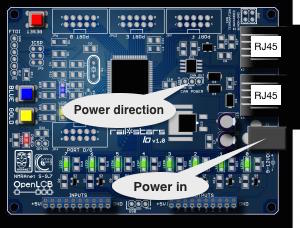CAN – supplying power
How to supply power to the CAN bus will depend on your specific nodes. Some nodes will accept power, and inject it onto the bus, but this may require setting some options — you will need to read the manual.
An easy way to supply power is by the use of a dedicated power module. For example, the RRCirkit’s PowerPoint accepts power and then supplies it to the CAN bus. See: http://www.rr-cirkits.com/description/LCC-Power-Point-flyer.pdf
Note that the power through the CAN cable is meant for light duty. This includes running the nodes electronics and the mpu, but can be used, for example, to drive high-efficiency LEDs. For higher power needs, such as powering many LEDs, coil-switch machines, etc., a separate power supply will be needed, and provision for this will be provided by the node.
Each node is mandated to label its usual power needs, minus output needs, and also how much power it can supply to the CAN network if it is powered externally.

Tips:
From Can Physical TN, line 213
“In order to prevent excessive voltage drop in the network cable, any node that draws power from the network cable should not be located any further than 6m (20′) of network cable length from a power supply point with sufficient capacity to power all the nodes located within that section of the network cable. In no case shall the total current flowing in any section of the network cable be allowed to exceed 1A. The specified maximum supply from any one connector of 500mA is meant to ensure this even in the presence of stub cables forming a T connection. “
** This is not a standard, but a technical note. Feel free to ignore at your own risk.
